Survivors and bereaved in UK.

Survivors and their families received limited or no follow-up after the Alexander L. Kielland disaster[REMOVE]Fotnote: Authorities’ work on the Alexander L. Kielland accident (riksrevisjonen.no). The work with the documentation project has shown that many still have a need to share experiences, connect with others affected, and find answers to their questions. At the Kielland Network’s annual conference in spring 2022, participants expressed that such gatherings are of great importance.
There were people from several nations on the accident rig. We wanted to investigate what follow-up the foreign people affected received. The largest non-Norwegian group consisted of 34 men from the United Kingdom, of whom 20 perished. Perhaps there were those on the other side of the North Sea who also had questions and a need for community?
Efforts to obtain contact information.
Obtaining contact information for survivors and relatives in the United Kingdom, over 40 years after the Kielland disaster, was no easy task. We sent a total of 17 letters via regular mail to addresses we found in the Kielland Fund’s archives. As expected, the response was limited, as the address list had not been updated in the last 30-40 years. Two letters were returned unanswered. Additionally, we received a letter from a neighbor of one of the deceased, informing us that the addressee was no longer alive. We also received a response from the daughter of one of the survivors who has since passed away. The letter we sent had made its way to Australia, where she now resides.
We approached 47 churches in areas where the affected individuals lived in 1980, requesting assistance in obtaining contact information for any relatives and survivors, if any of them still resided there. A priest informed the congregation about our project in church after Sunday Mass. Others took on the task of visiting private addresses and knocking on doors. Despite diligent efforts, this only resulted in contact with one of the survivors. We must admit that more modern methods yielded better results than both snail mail and announcements in the church.
We connected with several individuals through the Kielland Network’s websites and a Facebook page for Kielland survivors. This website was created by Gudny Hanson from Iceland and her sister Auður, who resides in Spain. Their father was the only one from Iceland who perished in the accident.
After the project gained more recognition and media coverage, more people are reaching out to us. As of early 2024, we have been in contact with survivors or relatives of 20 out of the 34 men from the United Kingdom who were on the rig on the day of the accident.
Trips to the United Kingdom
In collaboration with the Kielland Network, two trips to the United Kingdom were organized, one in June and another in September 2022. Most of the individuals we met had never spoken to others affected about the accident. Many of them were children when the incident occurred and were therefore not included in discussions about the tragedy. As adults, they therefore still had unanswered questions. Surprisingly, there were many similarities between the stories we heard in England and those shared by Norwegian survivors and bereaved in the Memory Bank.
Cleator Moor, a small industrial town on the west coast of England, was particularly affected by the Alexander L. Kielland disaster. Six men from this area lost their lives in the accident. When the oil industry flourished, many were enticed by the wages in the North Sea, which were much higher than those at the local Sellafield nuclear power plant.
Brian Graham was one of the men from Cleator Moor who perished. He was an avid amateur photographer, and thanks to him, we have obtained numerous pictures of the work in the North Sea. His wife, Brenda, was 30 years old when she became a widow with two sons, Paul (7) and Simon (4).
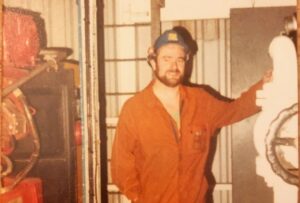
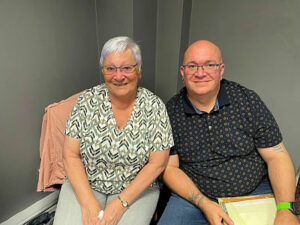
We met Brenda and her son Paul in the UK in the fall of 2022. The youngest son, Simon, had passed away two and a half years earlier due to substance abuse. His misuse of substances began when he received compensation for the Kielland accident when he turned 18. He fell into bad company and gained many new “friends.” In Cleator Moor, there are several examples of how things do not always go so well when an 18-year-old suddenly comes into a significant amount of money.


Colin Lamb lost his father, also named Colin Lamb, in the Alexander L. Kielland disaster. He still misses his father deeply, expressing, “I dream about him all the time. It is so real. It is something you missed in life, a dad. He is there in the dreams.”
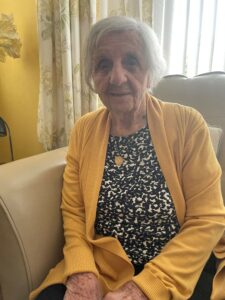

In Wallasey, near Liverpool, we met the 98-year-old mother of Alan Beggs, among others. He was newly married and had taken a job in the North Sea, which was considered safer than the nuclear power plant where he had previously worked. On one of his early trips to the North Sea, he never made it home.
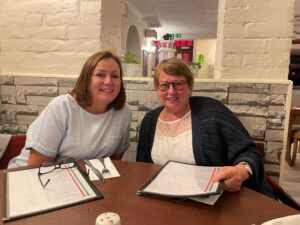
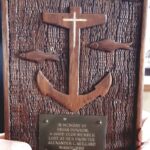
Jane and Joan Dowson in Great Yarmouth lost their father and husband, Brian Owen Dowson, in the Alexander L. Kielland disaster. He was one of the people who were never found. Instead of a grave, a memorial plaque has been created and hangs at the local boathouse.
“The Kielland Family”
Our visits to England have resulted in British bereaved individuals now connecting with each other. “The Kielland Family” initially started as a discussion group that spontaneously formed on social media. It is now in the process of being established as an interest group for British bereaved individuals, similar to the Kielland Network in Norway.
Read the full stories of several survivors and bereaved individuals in the Memory Bank
Master’s thesis
The students Simen D. Idsøe and Ingebjørg Haugom had a summer job at the Norwegian Petroleum Museum and took part in one of the trips to England. They have written a master’s thesis on the follow-up of the bereaved. The thesis, titled “The Forgotten Voices: Stories from British Bereaved Individuals after the Alexander L. Kielland Disaster,” can be read here: no.uis:inspera:148119414:148119738.pdf (unit.no)
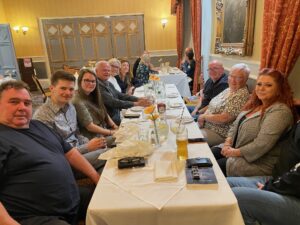
arrow_backThe Kielland LegacyMystery boxarrow_forward

I worked on the Ekofisk Tank in 1976-78.
One afternoon I was flown over to assist with the maintenance of a lifeboat on the Alexander Kieland.
As it happened,I was not needed.
I will never forget looking across at the amount of living containers installed on the far side opp the helideck.The weight etc.
Ironic that I later was watching a film in the cinema.
I later worked in the Southern North Sea Sector and met a Scot who had worked on the Kirkland.We both had the same view of how much weight there was on one side.
One of the guys mentioned in a BBC article who had died on the Alexander Keiland was John Harris. At the time of the disaster John lived in the Wybers Wood area of Grimsby. He was married and had, i think, two children. He was originally from Stevenage and had worked for a company called Grootcon on Albuskjell 2/4F before changing to a company called ( something like ) Copirust as a Instrument Engineer on the Edda platform
Wow!! Recently read an article in Grimsby Live by Peter Craig little did I realise the depth of emotion that would surface as a result.
A subsequent conversation led me online to the mountain of information, groups and those affected by the tragedy.
David A (3 Nov 2024) you are absolutely correct….thats my best mate you write about.